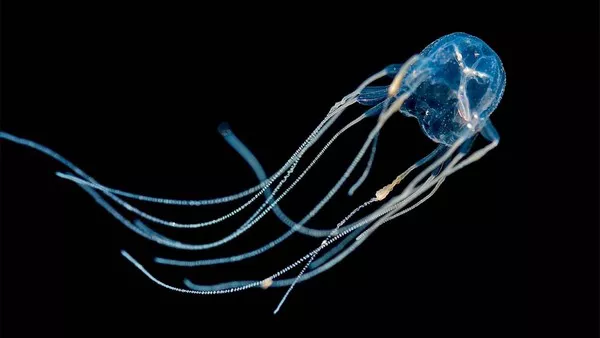Venomous creatures have long fascinated and terrified humans with their deadly capabilities. From snakes to spiders, various animals possess venom that can cause severe harm or even death. One of the most intriguing questions in the realm of venomous animals is: which animal venom kills the fastest? In this article, we will explore the world of venom and investigate some of the most potent and fast-acting venoms found in the animal kingdom.
Venom
Before delving into the specifics of which animal venom kills the fastest, it is essential to understand what venom is and how it functions. Venom is a specialized secretion produced by certain animals, typically injected into prey or enemies through specialized structures such as fangs, stingers, or spines. While venom serves various purposes depending on the species, its primary function is often to incapacitate or kill prey, deter predators, or aid in digestion.
Venomous animals have evolved complex chemical cocktails tailored to their specific ecological roles. These venoms contain a variety of proteins, peptides, enzymes, and other bioactive molecules that target specific physiological systems in their victims. Some venoms act primarily on the nervous system, causing paralysis or respiratory failure, while others disrupt blood clotting or induce tissue necrosis.
The speed at which venom acts depends on several factors, including the potency of the venom, the delivery method, the size and susceptibility of the victim, and the availability of medical treatment. In some cases, venom can kill within minutes, while in others, death may take hours or even days.
Top Five Fastest-Acting Venoms
Now, let’s explore five of the fastest-acting venoms known in the animal kingdom:
1. Inland Taipan (Oxyuranus microlepidotus)
Known as the world’s most venomous snake, the inland taipan, also called the “fierce snake,” inhabits the arid regions of central Australia. Despite its relatively docile temperament, this snake possesses venom of unparalleled potency. The venom of the inland taipan is primarily neurotoxic, meaning it targets the nervous system, causing paralysis and respiratory failure.
The venom of the inland taipan is composed of highly potent neurotoxins, including taipoxin, which specifically targets sodium channels in nerve cells. This disruption of nerve function leads to rapid paralysis and can result in death within as little as 30 minutes if left untreated. Fortunately, antivenom is available for the treatment of inland taipan envenomation, significantly reducing the mortality rate associated with its bite.
2. Box Jellyfish (Chironex fleckeri)
Found in the waters of northern Australia and Southeast Asia, the box jellyfish is one of the most venomous marine creatures in the world. Its tentacles contain thousands of microscopic nematocysts, specialized stinging cells that inject venom into prey or enemies upon contact. The venom of the box jellyfish is highly potent and primarily targets the cardiovascular system, causing rapid cardiovascular collapse and death.
Envenomation by the box jellyfish can lead to cardiac arrest and death within minutes, making it one of the fastest-acting venoms known. The venom contains toxins such as cardiotoxins and pore-forming proteins that disrupt heart function and blood flow, leading to systemic shock. Immediate medical intervention is crucial in cases of box jellyfish envenomation, including the administration of antivenom and cardiopulmonary resuscitation (CPR).
3. Cone Snail (Conus spp.)
Cone snails are a group of predatory marine snails found in tropical and subtropical waters worldwide. These snails are equipped with a harpoon-like radula tooth that they use to inject venom into their prey. The venom of cone snails is a complex mixture of bioactive compounds, including conotoxins, which target various ion channels and receptors in the nervous system.
Some species of cone snails produce venom capable of causing rapid paralysis and death in prey. The venom acts by blocking neuromuscular transmission, leading to respiratory failure and cardiac arrest. While human fatalities from cone snail envenomation are rare, certain species, such as the geography cone (Conus geographus), have been implicated in deadly incidents. Immediate medical attention and supportive care are essential in cases of cone snail envenomation.
4. Black Widow Spider (Latrodectus spp.)
Black widow spiders are notorious for their potent venom and distinctive red hourglass markings. Found in various habitats worldwide, these spiders possess venom containing neurotoxic compounds called latrotoxins. The venom of the black widow spider primarily targets the nervous system, causing severe pain, muscle cramps, and autonomic dysfunction.
In severe cases, envenomation by a black widow spider can lead to respiratory failure and death within hours. While fatalities are rare due to the availability of antivenom and supportive care, the venom’s rapid onset of symptoms warrants prompt medical attention. Despite their fearsome reputation, black widow spiders generally avoid human confrontation and only bite in self-defense.
5. Blue-Ringed Octopus (Hapalochlaena spp.)
The blue-ringed octopus is a small, highly venomous cephalopod found in the waters of the Indo-Pacific region. Despite its diminutive size, this octopus possesses venom of exceptional potency. The venom of the blue-ringed octopus contains tetrodotoxin, a powerful neurotoxin that blocks sodium channels in nerve cells, leading to paralysis and respiratory failure.
Envenomation by the blue-ringed octopus can cause rapid onset of symptoms, including respiratory distress and paralysis, often leading to death within minutes if left untreated. There is no antivenom available for blue-ringed octopus envenomation, making supportive care and respiratory support crucial in managing affected individuals. Despite its deadly venom, the blue-ringed octopus is not inherently aggressive and typically only injects venom in response to handling or disturbance.
See Also: Top 10 Biggest Tigers In The World
Conclusion
The world of venomous animals is filled with creatures armed with potent toxins capable of causing rapid and severe harm. From snakes and spiders to jellyfish and octopuses, various animals possess venom that can kill within minutes if left untreated. Understanding the mechanisms of venom action and the importance of prompt medical intervention is crucial in mitigating the risk posed by these fascinating yet dangerous creatures. Through continued research and conservation efforts, we can gain a deeper understanding of venomous animals and work towards minimizing human-animal conflicts while preserving biodiversity.
You Might Be Interested In:
























